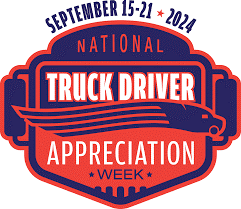CVSA-certified enforcement personnel will again be conducting roadside inspections of commercial motor vehicles (CMVs) during the Commercial Vehicle Safety Alliance’s (CVSA) Brake Safety Week, from August 25-31. The goal is to identify and remove CMVs with critical brake violations from our roadways and to highlight the dangers of faulty brake systems.
Properly functioning brake systems are crucial to the safe operation of CMVs. Brakes must be routinely inspected and carefully and consistently maintained so they operate according to the manufacturer’s specifications throughout the vehicle's life. Improperly installed or poorly maintained brake systems can reduce braking efficiency, posing a serious risk to public safety on our roadways.
Data and Research
- According to the U.S. Department of Transportation’s Federal Motor Carrier Safety Administration’s Large Truck Crash Causation (LTCC) Study, 32.7 percent of large trucks with pre-crash violations had brake problems.
- Brake-related violations comprised the largest percentage of out-of-service vehicle violations (25.2%) cited during last year’s Roadcheck America.
- The LTCC Study’s relative risk analysis indicated that large trucks involved in a crash where the braking capacity of the truck was critical were 50 percent more likely to have a brake violation than trucks involved in crashes where the truck’s braking capacity was not critical.
- According to the LTCC Study, of the trucks involved in brake-critical crashes, 45.5 percent had brake violations, compared with 29.9 percent of trucks involved in crashes of the same type where braking was not a relevant factor.
Brake Safety Week aims to reduce the number of crashes caused by poorly maintained braking systems on CMVs by conducting roadside mechanical fitness inspections and removing dangerous vehicles from our roadways.
In addition to inspections and enforcement, law enforcement agencies will carry out outreach efforts to educate drivers, mechanics, owner-operators, and others on the importance of proper brake maintenance, operation, and performance. These efforts are integral to the success of the safety initiative.
During Brake Safety Week, inspectors will primarily conduct the North American Standard Level I Inspection, a 37-step procedure that includes an examination of driver operating requirements and vehicle mechanical fitness. The inspections will cover brake system components to identify loose or missing parts; air or hydraulic fluid leaks; defective rotor conditions; measurement of pushrod travel; mismatched air chamber sizes across axles; air reservoir integrity and mounting; worn linings, pads, drums, or rotors; required brake-system warning devices; and other brake-system components. Vehicles with defective or out-of-adjustment brakes will be placed out of service.
Additionally, in the 12 jurisdictions using performance-based brake testing (PBBT) equipment, vehicle braking efficiency will be measured. PBBTs measure the cumulative brake force for the entire vehicle and divide it by the total vehicle weight to determine overall vehicle braking efficiency. The minimum braking efficiency for trucks is 43.5 percent, as required by 393.52 of the U.S. Federal Motor Carrier Safety Regulations and the CVSA North American Standard Out-of-Service Criteria.
Brake Safety Week is part of the Operation Airbrake Program, sponsored by CVSA in partnership with the Canadian Council of Motor Transport Administrators and the U.S. Department of Transportation’s Federal Motor Carrier Safety Administration.
What You May Not Know About Brake System and Inspections
Automatic brake adjusters are required
How to verify that your ABS is working
What is the proper method for a driver to adjust brakes with a unit with automatic slack adjusters?
Answer:
The proper method to adjust brakes on a vehicle with automatic slack adjusters is to apply ten sharp brake applications daily and just prior to entry of a roadside inspection.
National Truck Driver Appreciation Week is September 15-21, 2024
Nearly every aspect of daily life is made possible because a truck driver delivered the goods and resources people need. National Truck Driver Appreciation Week is an important time for America to pay respect and thank all the professional truck drivers for their hard work and commitment in undertaking one of our economy's most demanding and essential jobs. These 3.5 million professional men and women not only deliver our goods safely, securely, and on time, but they also keep our highways safe.
Americans and Canadians have taken extraordinary steps to show their appreciation for the vital work that professional truck drivers do. From children passing out lunches to "I Heart Truck" signs along the highways, the public has taken notice of the essential role truck drivers play in their lives. As we reflect on the past three years, I often wonder where we would be today if truck drivers had refused to drive at the onset of the COVID pandemic, when they were delivering our personal protective equipment (PPE), food, medical supplies, and much more.
This week in September is a small way to show appreciation to the 3.5 million professional men and women who not only deliver our goods safely, securely, and on time, but also keep our highways safe. Start planning now to do something special for your drivers during this week in September, which we set aside to recognize them.










